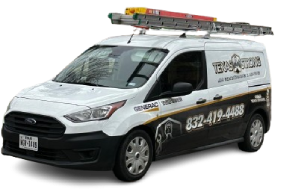
When your AC stops blowing Air, how will you know whether you should get a blower motor replaced? There are actually many reasons why an air conditioner might not work; the blower motor is not the only possible cause.
What is a blower motor, and how do you know where it is placed?
An air conditioner blower fan is the indoor fan responsible for circulating conditioned air throughout the home. It is also known as furnace fan. If the system provides electric heating, then the fan is located in an air handler. If it is gas heating, then the blower motor resides in the gas furnace.
So, it is the fan which when located in the heater provides cool air to combat the summer heat in Texas and is warm in winter.
Is There any Difference Between a Furnace Blower Motor and an AC Blower Motor?
The HVAC blower motor is synonymous with the indoor fan motor for circulating air. It can have a variety of names including AC blower motor, furnace fan, and the furnace blower motor.In your heating and cooling system, there are two fans: an indoor blower motor to circulate the air in your home and an outdoor fan motor in the outside unit. A fan motor’s function is to extract the heat collected from indoors. Your outdoor blower motor for ac unit, thus, can be made up of a heat pump or the traditional condenser.
What Are Symptoms of a Blower Motor Failure?
There are four signs to consider when thinking about a blower motor failure; if there is any doubt at all, we strongly recommend hiring a licensed HVAC technician who can determine the cause quickly. These are the most typical symptoms that customers describe to us.
1. Heating and Cooling System Stops
When your Ac or heater stops together, it’s is important to call a professional.
2. Weak or no airflow
When you put your palm over the air vents where air should be exiting and you discover that there is no air or weak airflow, the failure of a blower motor may be the cause of the problem.
3. Strange mechanical sounds
We definitely would consider that bashing sound a possibility for a broken motor mount or a broken fan. Generally, these scenarios happen if the HVAC system is too old or if regular maintenance is neglected for quite some time, such as replacing air filters.
When air filters are not replaced, in due course fans can get dirty. Dirt on the fan and motor may cause them to bear excess weight, which then leads to strain.
Most of the residential HVAC equipment our company installs, services, and repairs will have direct-drive blowers and fan motors, now that they hardly ever use belts to drive the fans. I have not witnessed them with clients’ systems for over a decade. Mostly they do have belt-driven motors in large commercial equipment. They whine into start-ups when these become faulty.
4. Bad Smell
Once every season or so, we receive calls from homeowners who complain of a burning, electrical fire smell, but they are unable to find the source. Normally what happens is that the homeowner calls the Fire Department, but they find no heat signature. This is textbook blower motor failure. It can be quite frightening if you don’t know what is happening.
What Should Your AC Expert Check to know a Blower Motor Failure?
It’s best that we take care of the blower motor first so we can get the air conditioning functioning again. The Gulf Coast usually remains warm to hot for most of the year, and no one would want to live without air. Next would be to determine why the blower motor failed, to prevent further failures.
An HVAC technician may check the following:
1. Airflow
This is the most frequent cause of the failure of blower motors, which occurs because a heating and air conditioning system has inhibited airflow or “high static pressure.” There are various causes behind this.
1. Deteriorated air filters, which are hardly replaced, mostly restrict airflow. (If there is but one thing that one could mention to homeowners, it would be that replacing air filters regularly solves many of their problems!)
2. Measuring static pressure usually occurs if the air distribution system is unbalanced. An experienced technician would usually hear if your system is unbalanced just by the distinctiveness of the sound it has been producing. By taking a static pressure reading, we can tell where in the system the air is being held up. Your air conditioner has to “breathe in” air (give its return) before it can blow out conditioned air around your home. If the flow is restricted, it’s tantamount to having a system under respiratory distress.
3. Poorly designed air distribution systems can cause air movement imbalances and high static pressure. When we were working on my sister’s system, we had to solve the high static pressure problem by adding more and bigger supply and return registers, so that her system would be able to handle the right amount of air.
4. Seasoned HVAC technicians can tell you the certain manufacturers and/or models of furnaces that had quite an issue with a lot of bad blower motors. We fix quite a bit of equipment, so we know which ones not to touch.
2. Electrical surge problems
An additional cause for blower motor failure could be electrical problems with other components in the heating and cooling system. These include-
1. Bad relay or battery (very rare)
2. Bad thermostat
3. Bad capacitor
4. Failure of the fan control on the PC Board
3. Physical Issues
There are other factors that may lead to a blower motor not working such as dry or loose bearings, broken motor mounts, and ruptured fins. The physical evidence is very clear.
Why Do Blower Motors Mostly Fail?
Overwhelmingly, the major cause of blower motor breakdown is static pressure in the heating and cooling system being too high. Static pressure comes from the air delivery system, your system of air ducts is generally located in the attic in our area. Electrical surges and a lack of regular maintenance also contributed to blower motor failure or being discovered too late.
What are the Factors that Affect the Price of AC Blower Motor Replacement?
Cost and availability of the part needed for your air conditioning system are the primary factors affecting the cost of ac blower motor replacement, followed by the installation labor cost of that part.
Since 2018-2019, the standards and energy efficiency of HVAC motors have been substantially improved, accompanied by the new federal Fan Efficiency standards (Fan Energy Rating or FER). Most, if not all, of the modernly installed motors are computer-driven.
How Blower Motor Technology Is evolving and What It actually Means to you?
Two different blower motor types, each computer controlled to keep those fan blades whirling, are FER compliant. These computer-controlled motors allow for a slow start and gradual shut down, which saves energy. There are the following types:
ECM motors use variations in airflow via RPMs and draw adjustable power to alternating magnetic fields in the stator to create differing magnetic pole alignments, thereby producing mechanical loads on the rotor rotating in parallel for torque generation. CT motors produce constant torque output with increased ampere draw. Since they produce torque in a uniform rate and more consistent manner in compliance with all load changes, CT motors render power-efficient output; their performance does work alongside the motor to compare changes in airflow and amp draw.
Permanent Split Capacitor (PSC) blower motors are slowly being phased out for the reason of their low efficiency as well as non-compliance with the present Fan Energy Rating (FER) requirements. Eco-friendly blower motors have superior efficiency notwithstanding; the new technology comes with a price. It is not as simple to swap out as it used to be; the technology is inside there. In those times, we could carry a universal AC blower motor replacement for any kind of blower motor. Universals for any blower motor simply do not exist anymore. A homeowners’ takeaway is for the time being, unless it has a hot minute, the exact blower motor engineered to work with one’s HVAC system by its batched regulations will meet efficiency and each manufacturer’s requirement.
How much time Does It Take to change a Blower Motor?
A standard blower motor typically takes two to three hours to be replaced. At times, if the highly qualified technician also has the part on hand, it may take as little as 1.5 hours.
Conclusion
Diagnosing the bad blower motor of an air conditioning system can be difficult, but knowing the signs of impending failure and how to go about replacing it makes things somewhat easier. If your AC is not doing its job of keeping you cool, do not hesitate to call an HVAC technician to identify the problem and restore the comfort of your home!




